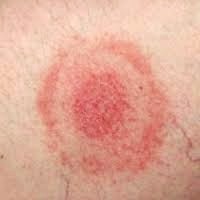Lymes Disease, Signs, Symptoms & Prevention.
 All Deer Stalkers should be aware of the signs and symptoms of Lymes Disease and how to prevent it. I would strongly recommend that if you are regularly out deer stalking in the spring and summer, you take a moment to read this.
All Deer Stalkers should be aware of the signs and symptoms of Lymes Disease and how to prevent it. I would strongly recommend that if you are regularly out deer stalking in the spring and summer, you take a moment to read this.
Lyme disease is a type of bacterial infection that is spread to humans by infected ticks. Ticks are tiny arachnids found in areas of woodland and long grass, that attach themselves to mammals, including humans and feed on their blood. Ticks are more commonly found during Spring and summer and, as all deer stalkers are acutely aware, are prevalent around deer and the areas where deer frequent.
As a result Lyme Disease affects Deer Stalking perhaps more than any other field sport. With the spring and summer supposedly on its way we should therefore all make ourselves aware of the signs and symptoms of Lymes disease and how to best prevent it. We should also understand what action we should take if we suspect that we have been infected. Read on.
First of all a word of reassurance. As we all know it is easy to read about health matters and instantly suspect that we are exhibiting the symptoms! Well the good news is not all ticks carry the disease, added to which Lymes disease in actual fact only affects 2,000 - 3,000 people in the UK each year.
With all the ramblers, hunters and outdoor activities that go on in the countryside, just because you have a tick bite, does not automatically mean that you will have contracted the disease! More good news......if caught early, Lyme Disease is very treatable. So don't panic! In the course of my work as a professional deer stalker I have frequently been bitten by ticks and have as yet, (touch wood), not contracted the disease!
 On many occasions it is quiet common for tick bites to go unnoticed, and for the tick to remain feeding for several days before dropping off. So the first most crucial bit of advice is that after deer stalking check yourself over. The longer the tick is in place, the higher the risk of it passing on the infection to you.
On many occasions it is quiet common for tick bites to go unnoticed, and for the tick to remain feeding for several days before dropping off. So the first most crucial bit of advice is that after deer stalking check yourself over. The longer the tick is in place, the higher the risk of it passing on the infection to you.
So firstly a few simple rules to prevent the ticks from biting:
a) Wear long sleeved shirts and suitable clothing. It is possible to buy clothing that has a tick repellent. An example of this is clothing from 'Rovince' some reports have shown this type of clothing to be 98% effective against tick bites. You can follow this link to find out more about their clothing: rovince
b) Tuck your trousers into your socks or wear gaiters.
c) Use insect repellent.
d) Check yourself for ticks after being out in the countryside, particularly around your underarms, groin and waist area.
Secondly what to do if you have been bitten by a tick:
1) Remove the tick by gently grasping it as close to the skin as possible, preferably using fine tweezers, and pull steadily away from the skin. Never use a lit cigarette end or match head.
2) Monitor the area for signs and symptoms. The earliest and most common symptom of Lyme disease is a pink or red circular rash that develops around the area of the bite, 3 to 30 days after you have been bitten. The rash is described as appearing like a bull's-eye on a dart board.
3) Be aware that other signs of the disease are flu like symptoms, such as tiredness, headache and muscle/joint pain. If you experience any one of these symptoms and suspect Lyme disease then speak to your Doctor and make them aware of your concerns.
As I say, chances are you will never contract this disease, however it does happen, so the key as with most diseases is early diagnosis and treatment, so you should make yourself and others aware!


















